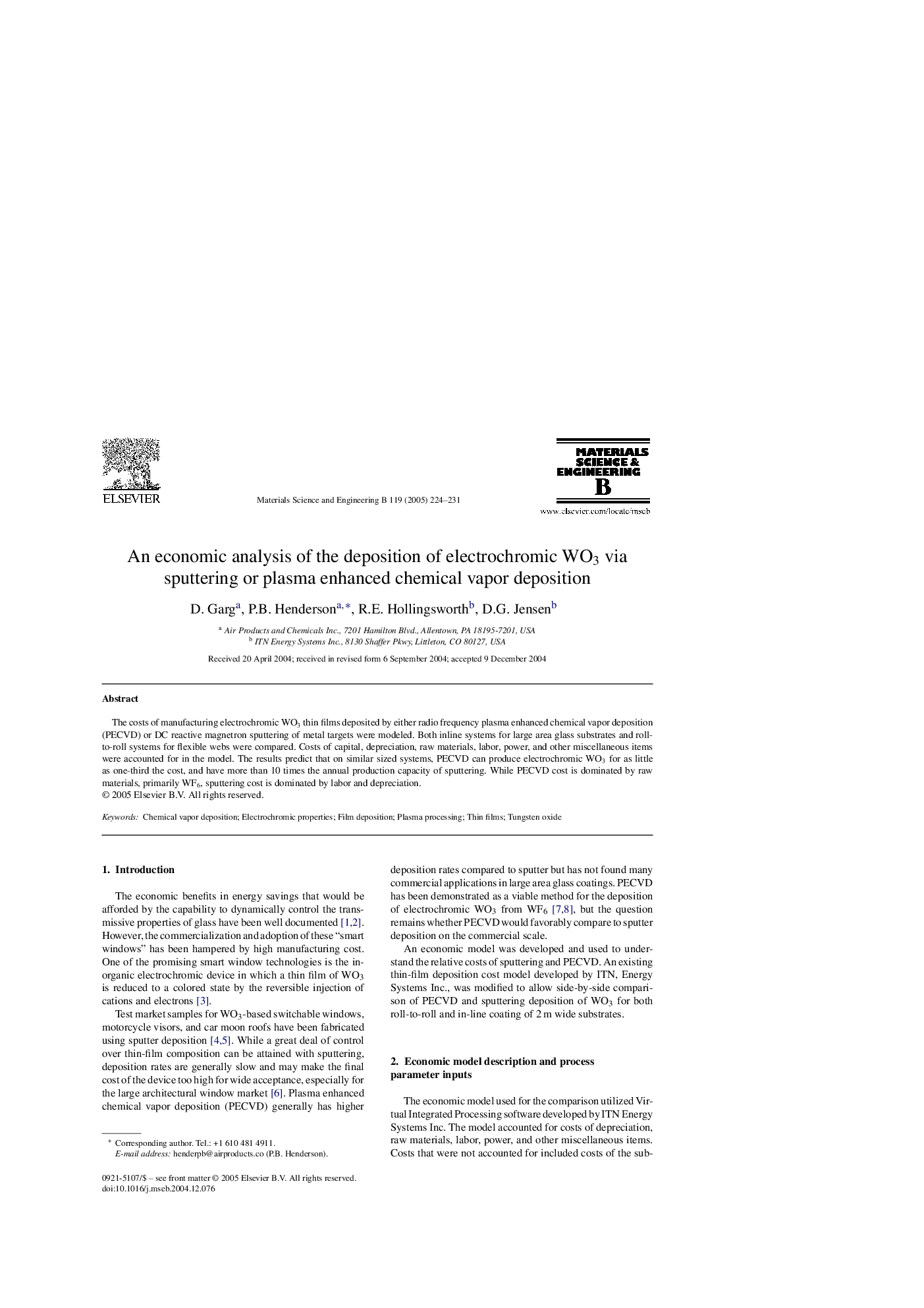| Article ID | Journal | Published Year | Pages | File Type |
|---|---|---|---|---|
| 10640073 | Materials Science and Engineering: B | 2005 | 8 Pages |
Abstract
The costs of manufacturing electrochromic WO3 thin films deposited by either radio frequency plasma enhanced chemical vapor deposition (PECVD) or DC reactive magnetron sputtering of metal targets were modeled. Both inline systems for large area glass substrates and roll-to-roll systems for flexible webs were compared. Costs of capital, depreciation, raw materials, labor, power, and other miscellaneous items were accounted for in the model. The results predict that on similar sized systems, PECVD can produce electrochromic WO3 for as little as one-third the cost, and have more than 10 times the annual production capacity of sputtering. While PECVD cost is dominated by raw materials, primarily WF6, sputtering cost is dominated by labor and depreciation.
Keywords
Related Topics
Physical Sciences and Engineering
Materials Science
Electronic, Optical and Magnetic Materials
Authors
D. Garg, P.B. Henderson, R.E. Hollingsworth, D.G. Jensen,
